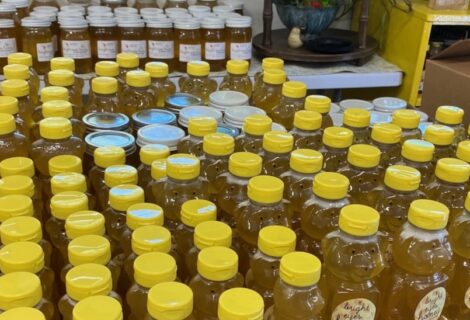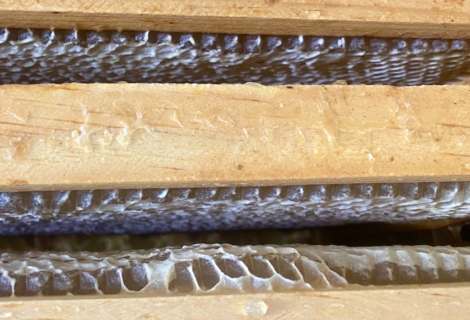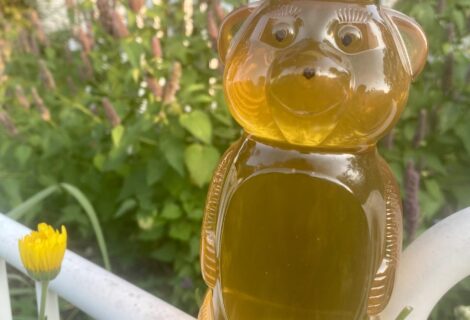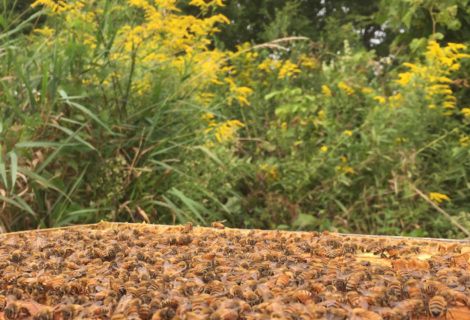Honey House Under Construction
In the fall, Clair arranged to have the concrete poured with the radiant heat tubing installed, as well as have 5 massive basswood tree tops removed that were leaning over their backyard and the area of the structure. After that, he has been working on the whole project basically by himself, except for just a few times when my uncle or one of us are over and can join him (My brother-in-law is pictured in the photo above).
He spent a lot of time measuring, cutting, and getting things square from the ground up so the structure is very “true” and solid. He purchased the I-beam rafters, steel roofing, and OSB, but most of the rest has been used and home-sawn lumber, doors, donated windows and insulation, etc. The 5 north-facing windows are from old sliding patio doors – very heavy and well-insulated. There are also two large high windows on the east and west faces, once of which can be seen below.
Along with the east & west doors with inset windows, this addition lets in a lot of light. Once the interior surfaces are done up in white, the cathedral ceiling should make for quite bright area during the day.
He collects used insulation by the van-load from a gentlemen near Chester who has a barn full of it. He then painstakingly measures and knife-cuts each piece to fit – both ceiling and walls. This is a large area, so that in itself is a big job, but a big money-saver as well since the idea is to have this ‘well’ insulated. In the spring, he’ll have a guy come do spray-foam insulation for the final layer that will seal everything up nicely, and ideally get us to an R-value of 20.
Just as a storage area for bee boxes and frames, this will be very advantageous because we won’t have to worry about all the mice and ant activity in the barn. You cannot imagine how much honey can drip out of old frames and how fast ants and other insects can find it!
Kim Flottum is the editor for Bee Culture (one of the two premiere beekeeping journals for the U.S.) as well as numerous beekeeping books (you might be surprised to find a picture of a gray-bearded gentleman above his name). In “Better Beekeeping”, he gives the advice not to start small and work your way up. But rather, imagine where you want to be in 15 years (or whatever) and purchase your 50 frame extractor, uncapper, 500 gallon holding tank, and build your honey house to accommodate it. Otherwise you end up buying a lot of intermediate-scale equipment that only lasts you for a few years and becomes much more expensive than necessary in the long run.
While I understand the point he’s getting at, I have to chuckle a little bit, as most people don’t have the luxury of jumping into something at the scale you need to for earning a living. Likewise, getting a huge loan from the bank only to find out a few years later that this isn’t going to work, is not so wise a move either. Oh well, I’m happy with our dozen-hive, small-scale operation for the time being…I’m thankful every day for God’s provision…and courtesy of my dad’s big undertaking here, we have a joint honey-house space to grow into 🙂











Recent Comments